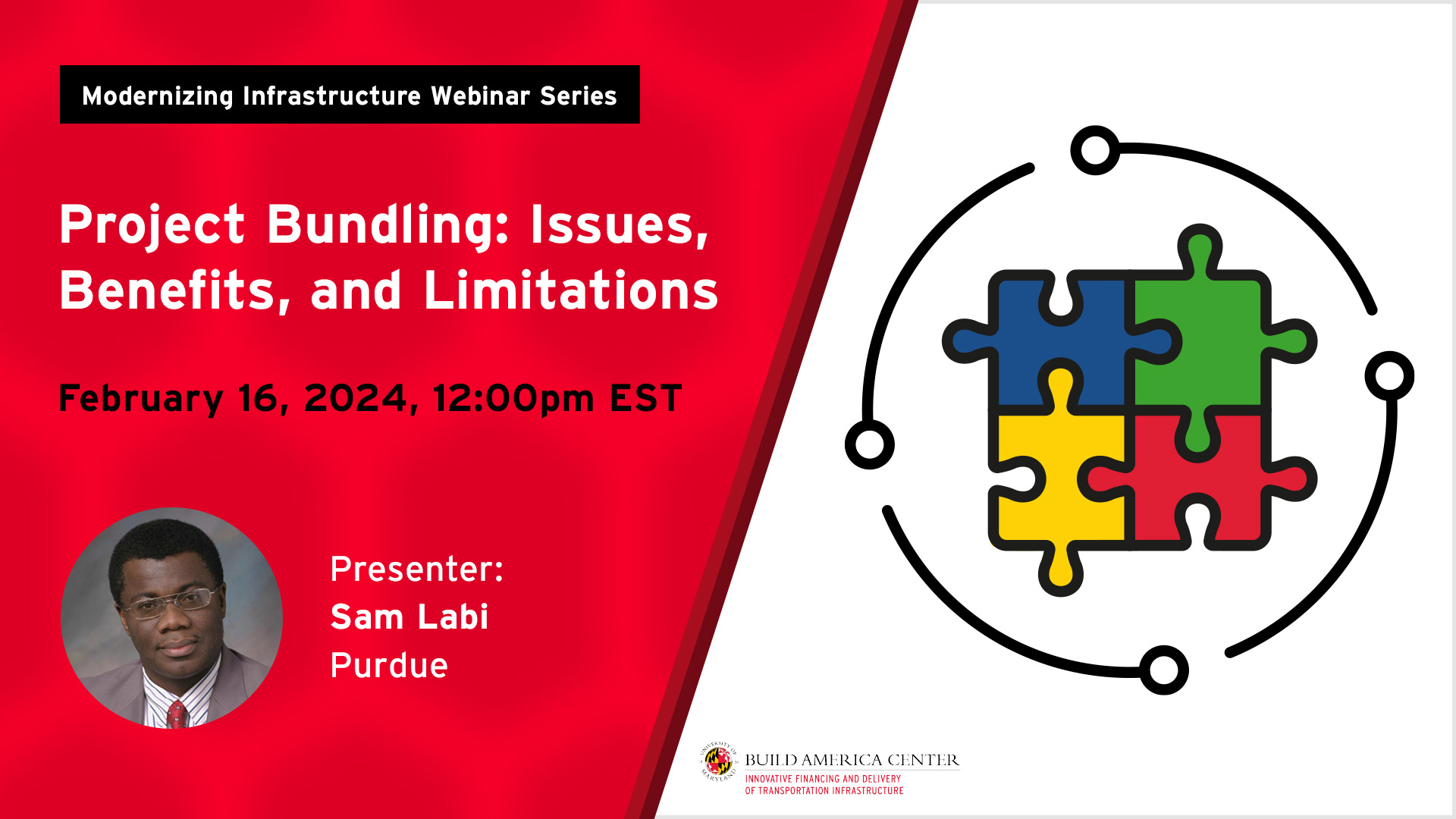The combination of multiple projects into a single contract (referred to as project bundling), continues to attract the attention of transportation agencies.
Stakeholders seek answers to bundling-related questions including: (1) how to measure bundling benefits, (2) empirical evidence on project bundling efficacy in terms of its benefits, (3) the limitations of project bundling regarding the benefits and (4) which project-related and contract-related factors that promote (or inhibit) bundling benefits. This presentation addresses these issues using a data-driven approach.
The presentation compares the average unit project costs of standalone and bundled projects, identifies the influential factors and conditions of project bundling benefits and presents statistical models that predict project cost savings due to bundling.
The presentation also identifies the primary drivers of project cost that is, the project size (which reflects economies of scale), bundling strategy (which reflects economies of bundling), and bidding market conditions (which reflects economies of competition).
It is observed that bundling benefits also are influenced by project type and “project similarity”. The concept of project similarity refers to the resemblance between two projects in terms of their constituent pay items.
The presentation throws light on the “elbow effect” (the extent to which larger contracts yield scale economies) but also the “bent-hand effect” (the extent to which increasing contract size may lead to scale diseconomies because they discourage small firms from bidding, thereby reducing competition), and the contract-size thresholds associated with both phenomena.



